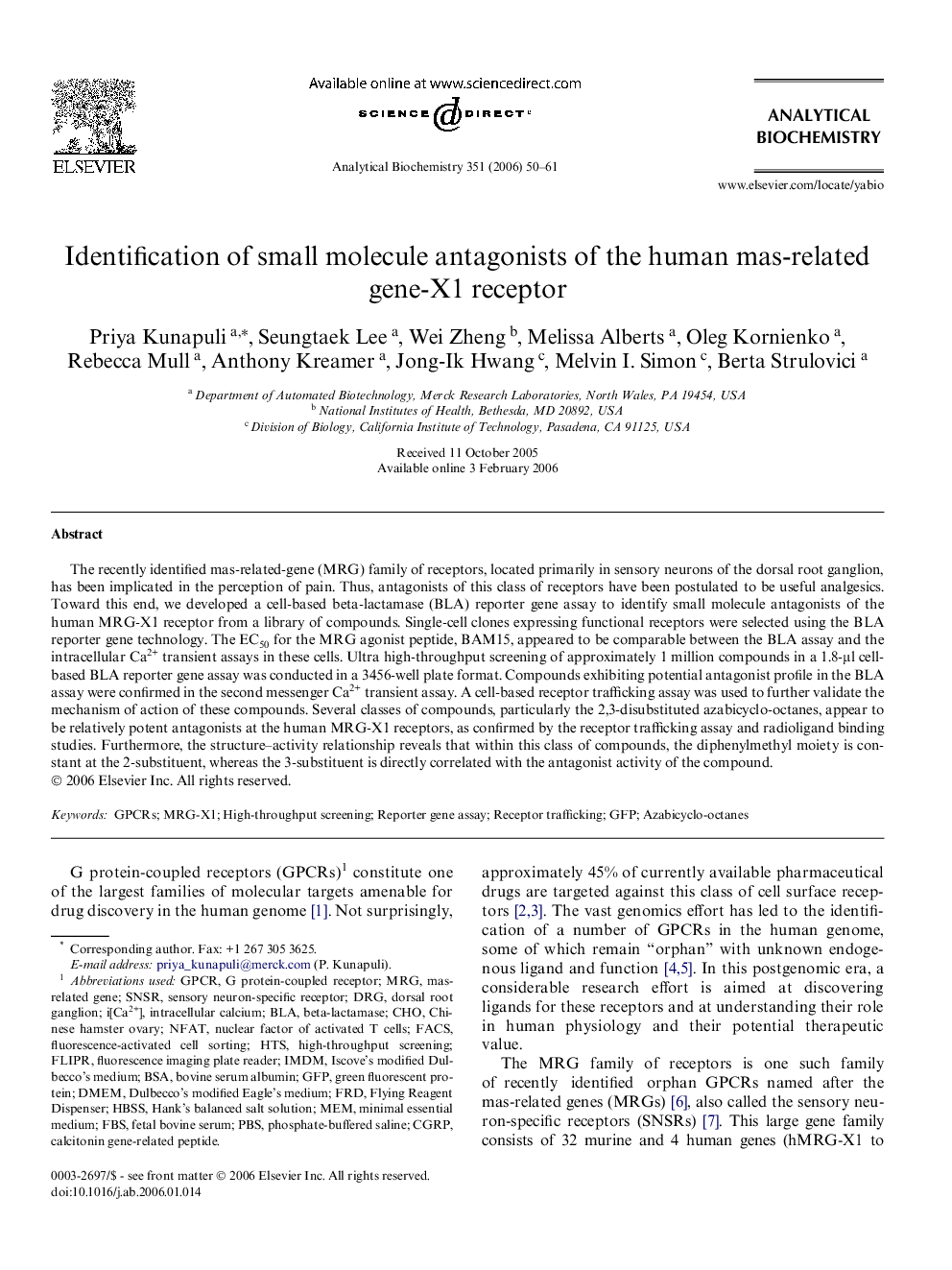| Article ID | Journal | Published Year | Pages | File Type |
|---|---|---|---|---|
| 1176843 | Analytical Biochemistry | 2006 | 12 Pages |
The recently identified mas-related-gene (MRG) family of receptors, located primarily in sensory neurons of the dorsal root ganglion, has been implicated in the perception of pain. Thus, antagonists of this class of receptors have been postulated to be useful analgesics. Toward this end, we developed a cell-based beta-lactamase (BLA) reporter gene assay to identify small molecule antagonists of the human MRG-X1 receptor from a library of compounds. Single-cell clones expressing functional receptors were selected using the BLA reporter gene technology. The EC50 for the MRG agonist peptide, BAM15, appeared to be comparable between the BLA assay and the intracellular Ca2+ transient assays in these cells. Ultra high-throughput screening of approximately 1 million compounds in a 1.8-μl cell-based BLA reporter gene assay was conducted in a 3456-well plate format. Compounds exhibiting potential antagonist profile in the BLA assay were confirmed in the second messenger Ca2+ transient assay. A cell-based receptor trafficking assay was used to further validate the mechanism of action of these compounds. Several classes of compounds, particularly the 2,3-disubstituted azabicyclo-octanes, appear to be relatively potent antagonists at the human MRG-X1 receptors, as confirmed by the receptor trafficking assay and radioligand binding studies. Furthermore, the structure–activity relationship reveals that within this class of compounds, the diphenylmethyl moiety is constant at the 2-substituent, whereas the 3-substituent is directly correlated with the antagonist activity of the compound.
